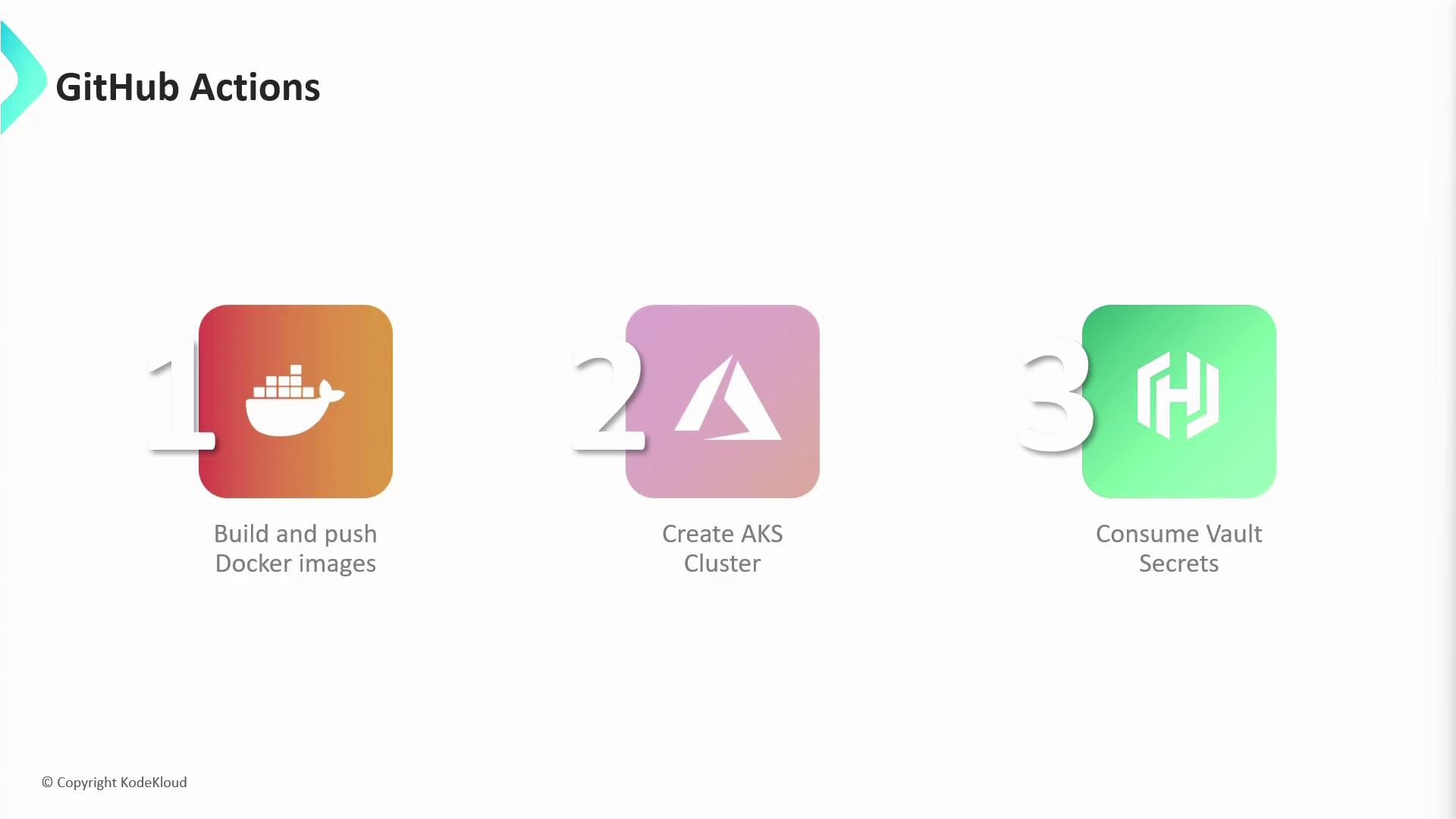GitHub Actions Certification
GitHub Actions Core Concepts
GitHub Action Core Components
Automate your software development lifecycle by leveraging GitHub Actions’ three main building blocks—workflows, jobs, and steps. In this guide, you’ll learn how they fit together to build, test, and deploy your applications seamlessly.
Example Workflow
Below is a sample workflow YAML stored under .github/workflows/ in your repository:
name: My Awesome App
on:
push:
branches:
- main
jobs:
unit-testing:
name: Unit Testing
runs-on: ubuntu-latest
steps:
- name: Checkout Repository
uses: actions/checkout@v3
- name: Setup Node.js
uses: actions/setup-node@v3
with:
node-version: '20'
- name: Install Dependencies
run: npm install
- name: Execute Unit Tests
run: npm test
Note
Save each workflow file in the .github/workflows/ directory. You can have multiple workflow files, each triggered by different events (e.g., pull_request, release, or a schedule).
1. Workflows
A workflow is a configurable automated process defined by a YAML file. It listens for one or more events in your repository and runs one or more jobs.
Key elements in the example above:
name: My Awesome App
A custom label visible in the Actions tab.on: push
Defines the event(s) that trigger the workflow. You can specify multiple events and filters.
You can also trigger workflows via:
pull_requestschedule(cron jobs)workflow_dispatch(manual run)
For more triggers, see Events that trigger workflows.
2. Jobs
A job is a collection of steps executed on the same runner. By default, jobs run in parallel, but you can coordinate them using dependencies.
jobs:
unit-testing:
name: Unit Testing
runs-on: ubuntu-latest
steps:
# Individual steps go here...
- Job identifier (
unit-testing): used to set dependencies. runs-on: selects the runner environment (ubuntu-latest,windows-latest, etc.).
3. Steps
Within each job, steps define individual tasks. They execute sequentially on the same runner.
- Use
usesto invoke an action. - Use
runto execute shell commands.
steps:
- name: Checkout Repository
uses: actions/checkout@v3
- name: Setup Node.js
uses: actions/setup-node@v3
with:
node-version: '20'
- name: Install Dependencies
run: npm install
- name: Execute Unit Tests
run: npm test
- Checkout Repository: Fetches your code.
- Setup Node.js: Installs Node.js and npm.
- Install Dependencies: Runs
npm install. - Execute Unit Tests: Runs your test suite.
4. Actions
An action is a reusable, shareable unit of automation. Use community or official actions from the GitHub Marketplace. You can also author custom actions.
| Resource Type | Description | Example |
|---|---|---|
| Build & Push Docker Images | Constructs and publishes Docker images to a registry | docker/build-push-action@v3 |
| Create AKS Clusters | Provisions Azure Kubernetes Service clusters | Azure/aks-set-context@v1 |
| Consume Vault Secrets | Fetches secrets from Vault and exposes them as environment vars | hashicorp/vault-action@v2 |

Getting Started
- Create
.github/workflows/ci.ymlin your repo. - Define your
ontriggers. - Add jobs and steps to build, test, and deploy.
With these core components in place, you’re ready to harness the full power of GitHub Actions for continuous integration and continuous delivery.
References
- GitHub Actions Documentation
- GitHub Marketplace
- Events that Trigger Workflows
- Storing Workflow Data as Artifacts
- Caching Dependencies
Watch Video
Watch video content